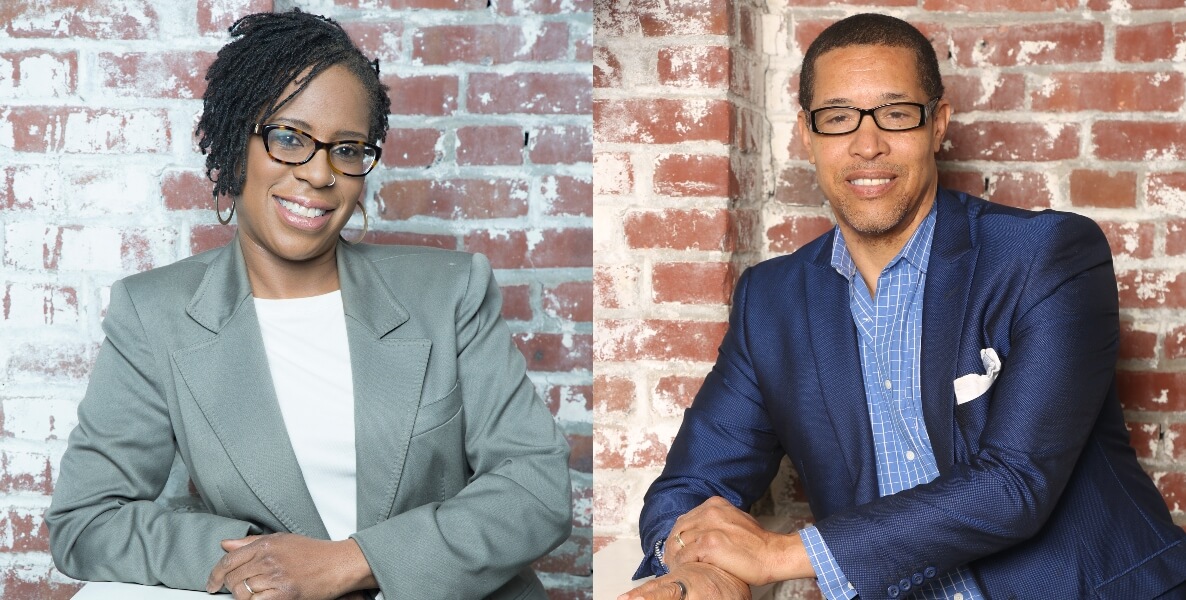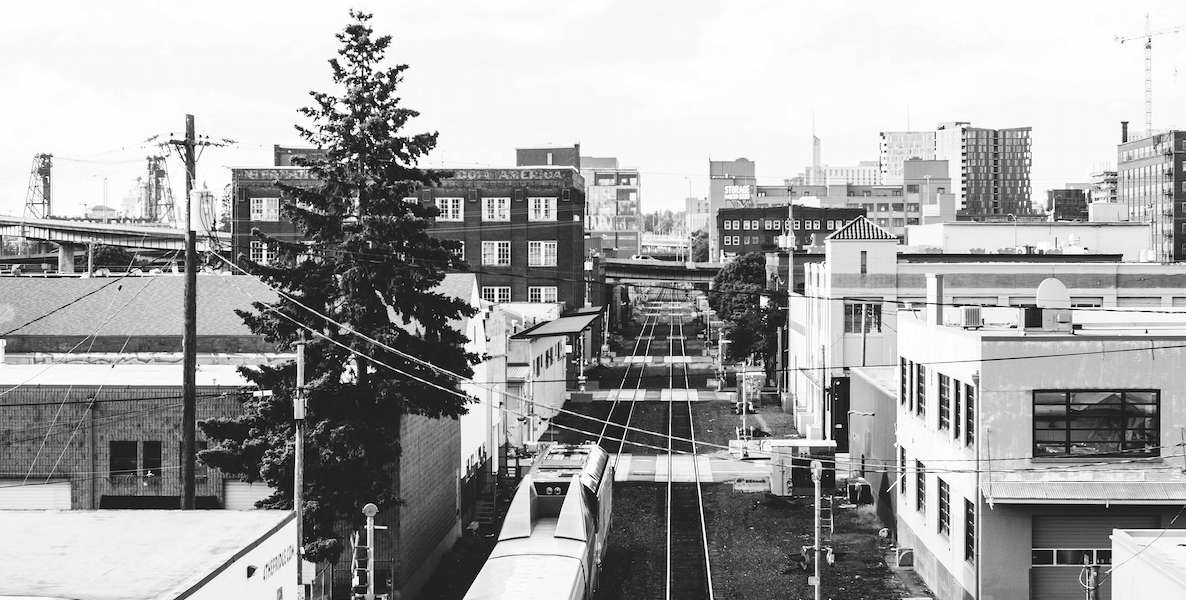to this story in CitizenCastListen
What we hear about less is something just as important for the health of the city and its residents: housing for the middle class, referred to in real-estate circles as, fittingly, “middle housing.”
Just a few weeks ago, Portland, Oregon, passed a landmark zoning reform to address middle housing that Philly could learn from.
Portland’s Residential Infill Project (RIP) will allow the city’s residential neighborhoods to have more housing types than just single-family homes, including triplexes, fourplexes, and sixplexes.
The city projects that, over the next two decades, RIP will allow 24,000 more households to avoid displacement and live in one of Portland’s walkable neighborhoods, close to transit, parks, shops and other amenities.
Diving Deeper into the Portland Plan
Michael Andersen is senior researcher at the nonprofit think tank Sightline Institute, specializing in housing and transportation. He says that the push for the reform came on the heels of the influx of money and transplants to Portland after the Great Recession, and the redevelopment that came along with it.
Support community-driven investmentDo Something
“Simultaneously, rents were rising very rapidly, first among higher-end units and then subsequently among lower-end units, as the people who had been in those nicer homes were displaced into poorer people’s homes,” Andersen explains.
As a result, there was what Andersen calls “a cascade of displacement” that drove rents up by about 10 percent a year, starting in 2016. In Portland, that’s the equivalent of about $100 a month. “Think about if the city had hiked taxes on every homeowner by $100 a month with no benefit to show for it,” Andersen says. “That would cause massive outrage.”
“The idea of being able to have more options for any given housing lot allows people to live the way that they want to in a more affordable fashion,” says Diana Lind, author of the forthcoming Brave New Home: Our Future in Smarter, Simpler, Happier Housing.
Part of the problem, Anderson says, is that Portland had no cap on the size of single-family homes, so the most profitable—and only legal thing under existing zoning laws—was to build increasingly larger houses.
Not that there’s anything inherently wrong with that, he adds; but if that’s the only thing you’re allowed to do on 70 percent of the city’s residential land, then you’re going to have an ever-growing split between really small apartments on the edges of the city, and really huge one-unit buildings everywhere else.
“And that is just not a healthy city,” Anderson says. “There’s a palpable sense that there’s a bunch of folks who those two housing types don’t serve very well. And we just need to be making room for more people, or else we’re gonna see this cascade of displacement running all the way down the line to the poorest folks.”
So tenants got organized, and elected first one, then another, progressive city council member, largely thanks to cross-class tenant organizing.
Answering the Pushback
Meanwhile, there was the inevitable opposition. “The number one pushback was from comfortable homeowners who were of the opinion that this would lead to a rapid transformation of neighborhoods,” Andersen explains.
People don’t like to admit it, because of the underlying smell of racism and elitism, but they fear real estate change, latching on to more politically correct worries like their “property values going down,” “congestion” in the neighborhood, and so on.
 So the city of Portland commissioned a series of economic analyses. Would increasing the number of kitchens in a structure really add so much value, that people will knock down buildings to do it? The answer: No, in almost every case.
So the city of Portland commissioned a series of economic analyses. Would increasing the number of kitchens in a structure really add so much value, that people will knock down buildings to do it? The answer: No, in almost every case.
It wasn’t just the wealthy who needed convincing, however. Die-hard advocates of affordable housing for low-income residents also were skeptical. When your focus is on helping impoverished people, it can be tempting to assume that there’s a finite number of resources that shouldn’t be diverted.
But Andersen points out that helping the middle class does help poorer communities: Increased population density argues for resources like mass transportation, which ultimately benefit all residents. Plus, keeping the middle class from making a mass exodus to more affordable neighborhoods keeps the current residents in those more affordable neighborhoods from being further displaced.
What ultimately pushed the reform through was a combination of factors. For one, there was a ton of coalition-building, spearheaded by Madeline Kovacs of 1000 Friends of Oregon, among the affordable housing network—including organizations like Habitat for Humanity and AARP. For another, the School District signed on, on anti-segregation grounds.
“Exclusionary zoning leads to economic segregation of schools—and—as a result, racial segregation. Why is the student population of one [Portland Public School] 14-percent white while another three miles away is 79-percent white? One reason is exclusionary single-family zoning,” said Courtney Westling, director of Government Relations for Portland Public Schools, in written testimony for a June 11, 2019, hearing for a related state law.
And then there was the eventual buy-in from affordable housing and private developers who ran the numbers, and realized that if you can build up to six units of a certain size on a lot, then it’s all financially doable and worthwhile.
Innovative urban developmentRead More
Could the Portland Plan work in Philadelphia?
Here, under Philadelphia’s zoning code, multi-family properties are already allowed in six of the 16 residential districts and six of the eight commercial districts; they’re located in pockets throughout our entire city, and especially in heavily used transit areas.
Jamila A. Davis, public information officer at Philly’s Department of Planning and Development, says the City’s zoning ordinance allows for more multi-family housing than what actually gets built in the city, which is primarily made up of rowhomes.
Even those rowhomes can be split into a duplex or triplex—but that requires a zoning variance from the Zoning Board of Adjustment, which isn’t a particularly fun or inviting process for your average homeowner. (And for new construction, city councilmembers can use “councilmanic prerogative” to block projects they don’t want to see in their districts.)
Davis says the City is in the midst of a remapping effort, with one aim being “corrective rezoning” to push for more multi-family housing near large arterials and public transportation.
Making that rezoning citywide, like in Portland, could be transformative. It could allow more families to stay in neighborhoods near good public transportation and schools, and in neighborhoods that are more racially and economically diverse, without the residential extremes we have now.
“The idea of being able to have more options for any given housing lot allows people to live the way that they want to in a more affordable fashion,” says Diana Lind, executive director at Arts and Business Council for Greater Philadelphia, and author of the forthcoming Brave New Home: Our Future in Smarter, Simpler, Happier Housing. (Lind is also a Citizen board member.)
Reimagining housing Delve Deeper
Perhaps the most compelling argument, in terms of how this could address both the middle-class and low-income families, Lind says, is in its potential to destigmatize multi-family housing. “It is generally thought of as housing for the less affluent,” she says. “And if you’re able to show that you can do quality multi-family housing that is both for middle- or upper-middle-class people but that also could potentially work for low-income people, that would make neighborhoods more welcoming to it.”
It would also enable neighborhoods to overcome many of the problems they face; middle-class families bring with them resources, networks, voices.
Portland projects that, over the next two decades, RIP will allow 24,000 more households to avoid displacement and live in one of Portland’s walkable neighborhoods, close to transit, parks, shops and other amenities.
Of course, Philadelphia is not Portland. They have a population of just over 650,000; ours is over 1.5 million. Their poverty rate is just under 15-percent; ours is just under 25-percent. A report last year found Portland to be the second-most-gentrified city in America (behind San Francisco). Despite the perception, Philadelphia experiences very little gentrification—defined as college-educated new residents displacing lower-income older residents of a neighborhood—as per a Philadelphia Federal Reserve Bank report last year.
And Lind points out that Philadelphia and Portland have very different needs and styles of addressing housing affordability.
“In Philadelphia there’s much more of a discussion about how to house low-income households because such a high proportion of our population is low-income,” she says. “That makes a lot of sense.”
Plus, she points out, whereas adding density in a city like Portland could support the development of public transportation, Philly already has a robust public transportation system.
But there are lessons we can glean from the experiments, mishaps and successes of growing cities like Portland. For one thing, Lind argues, like in Portland this would be a return to the kind of housing that was legal in Philly a century ago, and what you would see in areas like Mt. Airy or Chestnut Hill. Those would be some of the neighborhoods—as well as Northeast Philly, where single-family homes dominate—where this kind of reform could be most beneficial in allowing more and different types of families to live side by side.
“If you could build two ADUs on every single-family housing lot, as the Portland reform allows, in the Northwest and Northeast of Philly, I would guess that would add about 75,000 units of housing without costing taxpayers a dime,” says Lind. “Lots of homeowners could house relatives with privacy, or rent housing for income.”
To achieve this sort of transformative change we’d need the kind of coalition that formed around housing reform in Portland, which would first require a broad swath of Philadelphians to really care about housing needs—something that is on the rise.
In the meantime, Lind proposes baby steps: Find communities that are welcoming of the idea, and prove it can work. In her forthcoming book, Lind points to New York City, where one company, Common, did in fact do a pilot project focused on co-living for high-income millennials.
That showed developers this was a potentially interesting area of the housing market, which led others to come in and start partnering on low-income housing in New York, and middle-housing in places like Atlanta.
Of the path Philly is currently on—the continued development of projects like Center City luxury townhouses—we’ve missed some ripe chances to experiment. “Those would’ve been opportunities to show how multi-family [housing] could’ve been a good alternative to that,” Lind says.
“There’s potential here to show that things can work for all different price points,” Lind says. “It’s kind of a matter of demonstrating the viability of these projects both to the public, and to the developer community.”
The Citizen is one of 20 news organizations producing Broke in Philly, a collaborative reporting project on solutions to poverty and the city’s push towards economic justice. Follow the project on Twitter @BrokeInPhilly.
Photo by Sean Benesh / Unsplash











